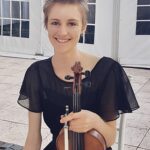Fictional life story helps self-healing from eating disorder

Fictional life story helps self-healing from eating disorder
“Out of your vulnerabilities will come your strength.” Sigmund Freud
A series of events inspired me to write A Dangerous Daughter. Firstly, in 2015, I was invited to take part in an international study on eating disorders, the Anorexia Nervosa Genetics Initiative. The results of the study were ground-breaking: scientists found eight genetic markers for anorexia. No longer a mysterious aberration, the markers for anorexia nervosa can be present from birth.
Three years after participating in this study, I was contacted by a historian from LaTrobe University, Dr Christine Brett Vickers, who was researching the history of psychoanalysis in Australia. She found a letter from a psychoanalyst in Perth, Western Australia, discussing a young girl with anorexia. Dr Vickers, who had read some of my work, recognised that the teenager described in the analyst’s letter was in fact myself. The dates, places, and description of the girl matched my own story, which Dr Vickers had read on my website, dinadavisauthor.com. This letter was the second catalyst for the writing of A Dangerous Daughter. The psychoanalyst who had written the letter became ‘Dr B’ in my novel (State Library of Victoria Archives, Ivy Bennett to Clara Geroe).
In late 2019, thanks to a referral from Dr June Alexander, I was approached by the ABC TV 7.30 Report to give an interview about my experience as a survivor of anorexia nervosa. I did so, with some trepidation. Baring my soul was scary, knowing most of my peers knew nothing of the childhood illness that had almost killed me. I was afraid of a resurgence of the criticism and blame I’d endured during my teenage years. In the 1950s in Western Australia, the term “anorexia nervosa” was not generally known, although the illness had been identified as early as1873 by Sir William Gull. So, it was inevitable that the victim was often blamed for her incomprehensible symptoms.
My story began more than 50 years ago. At the age of 13, I began refusing food, and my weight dropped dramatically. This was seen as wayward, even wicked, behaviour. Electro-Convulsive Therapy (ECT), a primitive and brutal practice in the 1950s, failed to cure my mysterious condition. Partly to protect my parents and sisters from witnessing my decline, and partly as a last ditch effort to ‘cure’ me, I was exiled from my family in New South Wales, and spent several painful years with relatives in Perth, Western Australia.
The popular view of anorexia, as typically promulgated in the media, was that it began with a decision by a (usually) young girl or boy to stop or restrict eating so that they will become fashionably thin. Nothing is further from the truth. Today, a child displaying symptoms such as I did in the 1950s, is highly unlikely to be removed from his or her family. Instead, commonly and ideally, the whole family takes part in the treatment, in recognition of the crucial role of the family in the patient’s recovery.
At the age of 15, starvation had wreaked extensive damage to my body and mind. I was given two months to live. Miraculously, through the work of my psychoanalyst, and my own fierce will to survive, I went on to write this book, and hopefully to help others who are grappling with anorexia. In doing so, I felt I had ‘come out’ to an unsuspecting world. I also wished to give hope and courage to patients and their families battling with anorexia.
I chose to fictionalise my story, partly in order to protect those members of my family still living, and partly to make the story less painful to myself. Drawing on the freedom of fiction, I was able to invent characters, and to disguise those family members who might otherwise be recognised. I never considered writing my story as a memoir, knowing that such self-disclosure could hurt others who are dear to me. Instead, I used the craft of writing fiction to weave a coming of age story which reflected the truth of my early life, without causing damage to my family.
Rather than exorcising my demons, the creative process pulled me back into those dark years. Reliving the trauma slowed the writing process, but the thought of helping other young people and their parents kept me going. In A Dangerous Daughter, I show how psychoanalysis helped me to fight “The Voice” which told me not to eat, and wanted me to die. Shining a light on those dark years helped me to acknowledge that my illness had been no fault of my own, and enabled me to forgive myself for the long-buried belief that I had caused irreparable harm and shame to my parents and sisters, simply because I had anorexia nervosa. I was able to forgive family members for exiling me, realising through the writing of A Dangerous Daughter that they knew no better in those far off days.
During the long, slow and painful process of writing A Dangerous Daughter, I received encouragement from my three children when the going got tough. I wanted them to know the truth about their mother, and to craft a work they would be proud of. I hope to reach out to other sufferers of this disease, and to show readers that anorexia nervosa is an illness, like cancer or COVID-19, rather than a life choice. Blame and shame have no part in the treatment of anorexia.
I owe my life to the work of Sigmund Freud, and especially to my psychoanalyst, the late Dr Ivy Bennett. I have given her name, Ivy, to my main character in A Dangerous Daughter.





